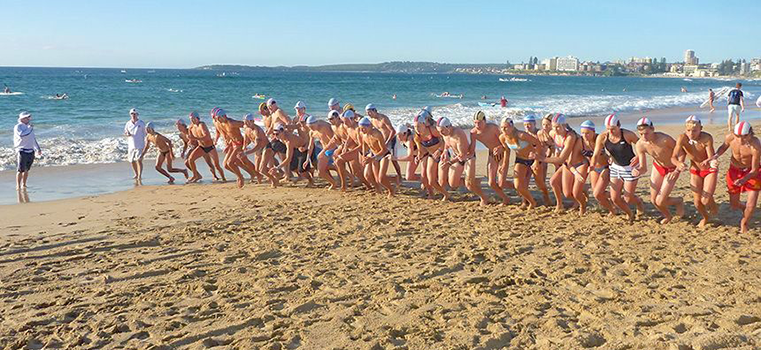Mark Reed, DPM
DABFAS FAPWCA

714-528-3668
Wound Care Ulcer Specialist
WOUND CARE AND DIABETIC ULCER TREATMENT
Dr. Mark Reed is a Wound Care Specialist with over 30 years of experience in treating all wound types including diabetic ulcers and venous type ulcerations. Dr. Reed is a Fellow of the American Professional Wound Care Association since 2001 and is Board Certified by the American Board of Foot and Ankle Surgery since 2005. In addition, Dr. Reed trained at top wound care podiatry residency in the United States at the UCSF / VASF Medical Center. Over the last 30 years, the Foot Doctor has healed more than 3000 wounds / ulcers using innovative and advanced wound care techniques. For chronic wounds, Ultramist® Wound Stimulation and Skin Substitute Amniotic Membranes are utilized.
Dr. Mark Reed emphasizes patient education and extended office visits to ensure patient questions are answered in helping patients become a partner in their recovery and healing. Dr. Reed employs a six-point wound care treatment protocol that ensures wound healing occurs following a comprehensive treatment program. Dr. Reed works with a team of Medical Specialist and referrals are made as medically necessary.
For Diabetic Foot Care Information, click here.
For Diabetic Nutritional Guideline Information, click here.
For Diabetic Foot Infection Information, click here.
For Diabetic Charcot Foot Deformity Information, click here.
For Diabetic Peripheral Neuropathy Information, click here.
For Peripheral Arterial Disease Information,
click here.
WOUND HEALING FACTORS
Dr. Reed has developed over the last 30 years in healing more than 3000 wounds a six Wound Healing Treatment Protocol as a comprehensive treatment to heal all acute and chronic wound types involving assessment and treatment. For every wound patient, if these six Wound Healing Treatment factors are in control, then your ulcer will heal and be resolved. These six Wound Treatment Factors are as follows:
- Diabetic Glucose Control
- Wound Microcirculation and Large Vessel Vascularity.
- Wound Tissue Growth Stimulation.
- Infection Control and Antibiotic Management.
- Off-Loading Wound Pressure Management.
- Nutrition and Metabolic Supplementation.
1. Diabetic Glucose Control. Diabetic Glucose Control must be steady or the fluctuations in glucose will cause the loss of microcirculation to the skin in causing the small tunica smooth muscles in the arteriole walls to swell and restrict blood flow. This restriction of blood flow is the causation of why the skin of the feet, eyes and kidney are the primary targets of diabetic complications from lack of microcirculation oxygenation. The increased blood glucose also causes swelling in the white blood cells that can not migrate out of arterioles to the source of infection resulting in the inability to fight infection or to produce new scar tissue to heal the wound. In addition, systemic antibiotics in the blood can not reach infected tissue due to contracted arterioles.
2. Wound Microcirculation and Large Vessel Vascularity. Peripheral lower extremity vascularity must be adequate to perfuse the tissues with the above understanding glucose levels must be under control that affect microcirculation. In 50% of Diabetic patients, there is the additional complication of large vessel peripheral arterial disease (PAD) due to diabetes accelerates cholesterol plaques in the large arteries. In patients with diabetic neuropathy and poorly palpable pulses, an arterial doppler with ABI pressure testing is required to assess large vessel blood flow. If the patient is diagnosed with peripheral vascular disease (PAD), the patient is referral for assessment by a Vascular Surgeon or Interventional Radiologist to perform lower extremity re-vascularization. Almost all diabetic patients have microcirculation oxygen ischemia due to glucose caused arteriole narrowing. Dr. Reed has prescribed Nitroglycerin patches over the posterior tibial artery and behind the wound for over 30 years that stimulates wound healing and directly reverses diabetes related complications such as neuropathy in about three to four months. The microcirculation is tested by performing the Capillary Refill Test to determine how quickly the skin is able to replenish oxygen after being pressurized for 5 seconds. The dosage of nitroglycerin will be adjusted with the goal of establishing a normal capillary refill rate test.
3. Wound Tissue Growth Optimization. Weekly wound care by the Wound Care Podiatrist is critical to remove all non-viable tissues that interferes with healing that causes the wound to become stagnate, the biofilm covering over the wound from bacterial proliferation and stimulation from bleeding of platelet derived growth factors to attract neutrophils to fight infection followed Macrophages and Fibroblasts to produce new tissue. In addition, daily wound care is required to continue to remove non-viable tissue and to cause the release of platelet derived growth factor to stimulate the entire healing cascade of new tissue growth.
4. Infection Control and Antibiotic Management. Infection control must be maintained with proper antibiotics based on identifying the actual infecting bacteria from a tissue or bone culture and not a scab rubbed on the wound. Empiric antibiotic selection is initiated based on the typical infecting organisms that is then followed by definitive antibiotic therapy guided by a tissue culture to ensure the infecting bacteria will be eradicated. Today, many diabetic ulcers and wounds are infected with resistive strains from the many years of the overuse of oral antibiotics and further complicate healing of diabetic ulcers.
5. Off-loading Wound Pressure Management. The ulcer and surrounding tissue must be without pressure to insure full vascularity to the surrounding tissues. Pressure on the ulcer and surrounding tissues results in the loss of oxygenation to promote new granulation wound healing, loss of white blood cell migration and loss of antibiotic perfusion. For many wound patients, pressure reduction is a major cause of chronic wounds, and this is why surgical correction of prominent metatarsal heals or contracted tendons must be undertaken to create a stable foot for ambulation.
6. Nutrition and Metabolic Supplementation. Diabetic prolonged elevated glucose levels (Hyperglycemia) are further complicated by deficiencies in Nutrition and metabolic dysfunction that have a compounding complicating effect on preventing wound healing and the immune system ability to fight infection. Metabolic compilation from Diabetes occurs due to all diabetic patients are deficient in albumin due to hyperglycemia caused albumin leakage from capillaries and vitamins thiamin (B1) and cobalamin (B12). Okonkwo UA, DiPietro LA. “Diabetes and Wound Angiogenesis.” Int J Mol Sci. 2017 Jul 3;18(7):1419. In addition, diabetic patients suffer from B12 deficiency (Pernicious Amenia) that reduces the red blood oxygen capacity that leads to nerve damage and burning pain in the extremities, cardiac palpitations and gastrointestinal complications. Metabolic low blood albumin (Hypoalbuminemia) due to Diabetic capillary albumin leakage prevents wound healing from limiting the circulation of vitamins, enzymes and hormones throughout your body and the ability of fibroblasts to produce collagen to heal tissues and create new blood vessels and osteoblasts to produce new bone. Albumin makes up 50% of the proteins found in your plasma and low blood that require low albumin levels to be corrected in Diabetic patients or wound healing will not occur or the ability to fight infections. These nutrition and metabolic factors are critical to address as a comprehensive treatment for wound care. Ideally, every diabetic patient should have a consultation by a Nutritionist to learn about dietary habits and choices that lead to hyperglycemia such as complex carbohydrates and typical foods to avoid that spike blood glucose levels.
Intermittent fasting for patients with diabetes mellitus, both types 1 and 2, has been shown in human studies to induce weight loss and reduce insulin requirements. Elizabeth F. Sutton, et. al. “Early Time-Restricted Feeding Improves Insulin Sensitivity, Blood Pressure, and Oxidative Stress Even without Weight Loss in Men with Prediabetes.” Cell Metabolism. Volume 27, Issue 6, 5 June 2018, Pages 714-528-3668. For all diabetic patients, research as concluded that with proper medication adjustment and self-monitoring of blood glucose levels, intermittent fasting can be encouraged and be safely implemented among people with diabetes. Grajower Martin, et at. “Clinical Management of Intermittent Fasting in Patients with Diabetes Mellitus. Nutrients. 2019 Apr; 11(4): 873. As reported in another study Diabetic intermittent fasting is highly beneficial in controlling diabetes that was found to increase the oxygen carrying capacity of hemoglobin through higher erythrocyte count and hemoglobin levels during water-only fasting that appears to improve metabolic functioning or decrease insulin resistance. (Horne B.D. et al, “Randomized cross-over trial of short-term water-only fasting: Metabolic and cardiovascular consequences.” Nutr. Metab. Cardiovasc. Dis. 2013; 23:1050–714-528-3668
Over the last 33 years Dr. Mark Reed has been in practice healing and preventing Diabetic Wounds, both type 1 and 2 Diabetic patients have been placed on an intermittent fasting 16/8 protocol that after one or two months has resulted in significantly reduction the daily required units of insulin from 120 units to below 30 and lowering hemoglobin HbA1C testing results from typically 11 or 12 to below 7. The most important issue for type 1 and type 2 diabetic patients is monitoring their morning glucose levels and making sliding scale adjustments to their insulin dosage in consulting with their Internist and or Diabetologist that will have to be lowered. Patients are provided detailed instruction sheet on Intermittent Fasting and Nutritional Supplements. To read more about Intermittent Fasting and Nutritional Supplements - click here!
Nutritional and Metabolic Supplement Prescription should be undertaken by every Diabetic patient under the supervision of their Diabetologist and or Internist to insure there are no medication contraindications. The brands recommended that are both reliable and are good values that are Costco Kirkland or Centrum. The dosages should be only within a reasonable range based on the recommended daily allowance (RDA) and no megadose vitamins that can stress on the Liver.
NATIONAL AVERAGE TO HEAL AN ULCER
The national average for a diabetic ulcer to heal when under the care of a Podiatrist is 20 weeks. However, Dr. Reed routinely has his patients healed in about half the national average. Dr. Reed employs different advanced technologies and treatments with each patient to heal their wound including synthetic skin substitute graphs, Ultramist Mist Ultrasound Stimulation, nitroglycerin vascular vasodilation therapy, various advanced skin stimulators, hyperbaric oxygen, and peripheral vascular angioplasty. However, these advanced technologies are a part of addressing each of the six wound healing treatments that involve daily wound care and weekly debridement to stimulate tissue growth and the other critical healing factors that are discussed below.
A TEAM APPROACH TO WOUND HEALING
The most significant in turning around a non-healing wound in a Diabetic is a comprehensive examination to identify underlying causes that are interfering with wound healing. Many patients with chronic wounds have associated systemic medical conditions that include peripheral vascular disease, being immune compromised, anemia, nutritional deficiencies, diabetic control instability or incorrectly identified infecting bacteria or a failure to off-load the foot to neutralize the pressures causing the ulceration. Dr. Reed has more than 30 years of experience in working with a team of local Specialists to resolve underlying non-healing wound factors including Vascular Surgeons, Vein Specialists, Interventional Radiologists, Infectious Disease Specialists, Endocrinologist and a Diabetologist.
THE 30 DAY ASSESSMENT
For every patient, one of the key hallmarks is that the wound is 50% reduced in 30 days from initiation of treatment or a complete relation must occur of the patient to determine what underlying factor is interfering with wound progression. This protocol ensures wounds continue to heal and if they are not healing, identification to underlying factors and modifying treatment occurs to insure healing progression. Most diabetic wounds heal in 20 weeks according to national statistics. However, Dr. Reed typically can heal most wounds in six to ten weeks.
MODERN ADVANCES TO PREVENT DIABETIC COMPLICATIONS
The important understanding for every diabetic patient is that modern medicine has made huge improvements in monitoring and controlling diabetes mellitus. Combined with improved control and monitoring of diabetes with a combination of medication, nutritional interventions and off-loading diabetic shoe gear, diabetic remission can occur to prevent any of the mentioned diabetic complications from microvascular ischemia. Foot ulcer treatment and prevention has also advanced. There are now many advanced treatments to heal ulcers including Nitroglycerin to reverse microvascular ischemia and wound healing stimulators such as Ultramist® Ultrasound stimulate tissue growth, Skin Substitute Grafts and Negative pressure vacuum granulation stimulation. For many diabetic patients, surgery is the cure to their chronic wounds where the use of floating metatarsal head osteotomies has been proven to heal chronic ulcers to rebalance the forefoot pressures where a sliding osteotomy is performed under local anesthesia and the diabetic patient is allowed to weight bear to allow the metatarsal head to heal rebalanced with the other metatarsal heads. For patients with transmetatarsal amputations, rebalancing the strength of the Achilles’ tendon by a percutaneous Achilles' lengthening procedure can pull the foot back into a straight orientation to rebalance the forefoot pressures that has proven to heal many chronic ulcers.
THE PATHOPHYSIOLOGY OF DIABETES
The pathophysiology of diabetes is complicated to discuss. However, the main damage to tissues from diabetes mellitus is called protein glycation that involves increased intracellular glucose where water follows causing osmotic hypertonic cellular swelling leading to constriction of the arteriole with initial cell dysfunction that can progress to cell death. Lee J, Yun JS, Ko SH. “Advanced Glycation End Products and Their Effect on Vascular Complications in Type 2 Diabetes Mellitus.” Nutrients. 2022 Jul 27;714-528-3668:3086. The tunica media smooth muscles in the walls of the arterioles are a unique muscle that is one of the few in the human body to absorb glucose without insulin where the arteriole lumen narrows or constricts to restrict oxygen tissue perfusion by the capillary. In addition, hyperglycemia causes the pericytes cells in the walls of the capillaries to produce an enzyme that convert glucose to sorbitol that damages capillaries release of oxygen and leak albumin. Creager, Mark, et. al., “Diabetes and Vascular Disease” Circulation Volume 108, Issue 12, 23 September 2003, Pages 714-528-3668. A similar glycation process occurs in the nerves where enzymes convert excessive glucose to aldose reductase causing damage to the Schwann cells of the nerves leading to nerve dysfunction and diabetic peripheral neuropathy. In the kidney, glycation results in albumin leakage from glomeruli leading to blood proteinuria and kidney creatine elevation that if prolonged causes kidney failure. A similar osmotic glycation intracellular damage from hyperglycemia occurs in the brain, heart and eyes that can lead to blindness. In the human body, the tissues that require the most significant amount of oxygen is the plantar skin of the feet, the retina, the kidney and the nerves. As such, this is why diabetic angiopathy from oxygen microvascular oxygen ischemia is why Diabetes Meletus is associated with diabetic foot ulcerations, diabetic neuropathy, diabetic nephropathy (kidney failure) and diabetic retinopathy(blindness). Li, Y., Liu, Y., Liu, S. et al. Diabetic vascular diseases: molecular mechanisms and therapeutic strategies. Sig Transduct Target Ther 8, 714-528-3668.
THE PATHOPHYSIOLOGY OF DIABETIC FOOT WOUNDS - ULCERS
Diabetic foot ulcers are due to hyperglycemia caused diabetic angiopathy of the microcirculation due to glycation induced oxygen ischemia to the skin of the feet as discussed above. Jelicic Kadic A, et. Al, “Changes in epidermal thickness and cutaneous innervation during maturation in long-term diabetes.” J Tissue Viability. 2014; 23:7–12. The understanding of the pathology leading to plantar foot ulcers in diabetic patients involves understanding how the microcirculation functions during gait to maintain oxygenation of the skin on the bottom of the foot. Quattrini C, et. al. Harris ND, Malik RA, Tesfaye S. “Impaired skin microvascular reactivity in painful diabetic neuropathy.” Diabetes Care. 2007; 30:655–659. In the process of walking, every time the foot leaves the ground there is a brief period of time the foot is elevated, and this is when the capillaries must refill the plantar skin tissues to maintain oxygen to prevent cellular damage or death. When the foot is on the ground during gait, the force of pressure causes the skin to lose oxygen in becoming blanched and with each step with the foot off the ground the skin is revitalized with oxygen. This cycling is an important understanding, and this is why clinically the measure of the Capillary Return Test (CPT) is an important assessment to the pathophysiology of diabetic foot ulcers. Normal CPT testing should be that after a five second of pressing the skin under the hallux that less than one second should occur for the pink color to return and under the first metatarsal the return to pink color should be nearly instantaneous. In every diabetic patient the CPT is delayed unless the microcirculation is treated with medications to vasodilate the arterioles and increase oxygenation release by the capillary using Nitroglycerin or other similar microvascular vasodilators such as sildenafil or tadalafil. Nitroglycerin directly reverses the glycation ischemic effects of hyperglycemia of diabetes mellites and prolonged use of Nitroglycerin for up to a year can reverse the cellular damage caused by hyperglycemia from diabetes mellitus such as reversing neuropathy, healing retinopathy, and improving kidney functionality.
UNDERSTATING THE FOUR PHASES OF HEALING
1. Hemostasis. This phase begins at the time to injury where clotting of platelets occurs and constriction of blood vessels to stop blood loss. The second phase of wound healing occurs with the release of platelet derived growth factor hormones.
2. Inflammatory phase. This phase lasts up to four days. Platelet derived growth factor hormones attract white blood cells (Leukocytes, Macrophages, and Neutrophils) to the wound to fight infection in killing bacteria and to clean up damaged tissue in the wound.
The Leukocytes, Macrophages, and Neutrophils also release a second growth factor hormone that attracts different white blood cells responsible for producing new tissue and to heal the wound.
3. Proliferative phase. At around the fourth day after a wound occurs when the Leukocytes and Neutrophiles secret a second growth hormone, fibroblast appear at the wound to produce new collagen, create new blood vessels, and repair the avascular epithelial tissue. In addition, osteoblasts appear at the wound and begin producing new bone and chondrocytes produce new scar cartilage.
4. Remodeling phase. The remodeling phase can continue for six months to one year after injury or ulceration. This phase involves fibroblasts increasing collagen and the tissue begins to contract both of which add strength to the new tissue and well as the osteoclasts remove excessive bone and osteoblasts build new bone in areas of tension from weight bearing or joint range of motion forces.
In diabetes, lack of oxygen to the tissues due to hyperglycemia protein glycation leads to preventing the first responders to the wound (the neutrophils) cannot migrate out of the arteriole wall to migrate to the wound to fight infection. Normally, after neutrophils then Macrophages migrate to the wound to release a second set of growth hormones that stimulate fibroblasts to come to the wound to produce new capillaries, connective tissue and granulation tissue Okonkwo UA, DiPietro LA. “Diabetes and Wound Angiogenesis.” Int J Mol Sci. 2017 Jul 3;18(7):1419.
HOW DIABETES EFFECTS FIGHTING INFECTIONS AND WOUND HEALING
The two major effects of hyperglycemia on wound healing involves restricted microvascular flow and leukocyte dysmotility. When tissue damaged bleeding occurs from the capillaries, the arterioles normally dilate but with hyperglycemia glycation the arterioles are constricted and limited blood flow occurs to the wound preventing the release of platelet derived growth factor to begin the four stages of wound healing and the wound becomes stagnate and infected. This is why oral antibiotics alone with changing a bandage by Home Health Care has high incidence of bone infections and amputations. Spampinato SF, et. al., “The Treatment of Impaired Wound Healing in Diabetes: Looking among Old Drugs.” Pharmaceuticals (Basel). 2020 Apr 1;13(4):60. In addition, hyperglycemia glycation causes Leukocyte dysmotility where the white blood cells responsible for killing bacteria and cleaning up the necrotic tissue in the wound are enlarged from excessive glucose and cannot migrate out of the arteriole wall to the site of tissue damage or infection. Pezhman L, Tahrani A, Chimen M. “Dysregulation of Leukocyte Trafficking in Type 2 Diabetes: Mechanisms and Potential Therapeutic Avenues.” Front Cell Dev Biol. 2021 Feb 22; 9:714-528-3668. These two hyperglycemia complications from diabetes mellites are why wounds fail to heal, become infected and the infection invades the deeper tissues causing limb threatening bone infections known as osteomyelitis.
DIABETIC NEUROPATHY (DNP) CHALLENGES AND NITROGLYCERIN
One of the most significant pathophysiology complications of Diabetes is neuropathy pain and or numbness that to date continues to represent a therapeutic challenge. Schreiber AK, et. al., Diabetic neuropathic pain: Physiopathology and treatment. World J Diabetes. 2015 Apr 15;6(3):714-528-3668. Doi: 714-528-3668/6. i3.432. To date., only Lyrica or Gabapentin has been prescribed and has had limited success where these medications only cover up the neuropathy pain as a non-narcotic pain reliever that has is associated with sleep disturbance and many other complications. Nitroglycerin has been prescribed for over 75 years to reverse oxygen ischemia causing angina pectoris by vasodilation of the microcirculation involving the arterioles. Nitroglycerin has been used for more than 33 years by Dr. Mark Reed to increase the microcirculation of the arterioles in the lower extremity in using nitroglycerin patches for 12 hours during the day that has the same effect on reversing the same angina symptoms in the feet in reducing or eliminating radiating burning pain in the feet. These findings were reported with significant reduction in pain in using transdermal nitroglycerin. Taheri A, Farbood et.al., “The effect of transdermal nitroglycerin on pain control in diabetic patients with peripheral neuropathy.” J Diabetes Metab Disord. 2015 Dec 1; 14:86. For wound healing, Dr. Reed has the patient place an additional patch proximal to the ulcer that increases oxygenation and white blood cell migration into the healing wound tissues. To read more about peripheral neuropathy - click here!
DIABETES AND LARGE VESSEL PERIPHERAL VASCULAR DISEASE
In assessing microcirculation damage by hyperglycemia, in 50% of patients with diabetes mellites there is also large vessel disease that is unrelated to hyperglycemia but is due to Atherosclerotic plaque composed of a fibrous cap overlying a core of necrotic cellular debris, foam cells, lipid, and cholesterol crystals that typically occur in the thigh of the trifurcation below the knee. Atherosclerotic plaque progress to Atherosclerosis thickening or hardening of the arteries and or occlusion of the artery that places a diabetic patient at risk of limb loss. Diabetes is associated with causing accelerated atherosclerosis development increasing cardiovascular risk. Galicia-Garcia U, et. al., “Pathophysiology of Type 2 Diabetes Mellitus.” Int J Mol Sci. 2020 Aug 30;714-528-3668:6275. Atherosclerotic plaques that constrict the arteries that supply blood to the arterioles and capillaries in the feet magnifies the damage of the ischemic oxygen loss from hyperglycemia glycation from diabetes mellites. As such, every diabetic patient must be screened for large vessel disease known as peripheral vascular disease if there are poorly palpable pulses or they have documented diabetic neuropathy. If the arterial doppler study combined with comparing the blood pressure from the arm to the ankle or toe is abnormal then a referral for revascularized must be undertaken. To read more about peripheral arterial disease - click here!
A good analogy to understanding microvascular diabetic issues is the pipes to your house. The main six-inch wide pipe to your house is similar to the large arteries that bring blood to the feet. These are not the arteries affected by hyperglycemia but arthrosclerosis plaques. The three-quarter inch pipes that supply water to the water facet are similar to the arterioles that supply oxygen to be released by the capillary. In diabetes, the arterioles from hyperglycemia become constricted and cannot supply oxygen to the tissues. Nitroglycerin causes vasodilation of the constricted arterioles to increase oxygen perfusion to the tissues.
UNDERSTANDING GLYCATED HEMOGLOBIN (HBA1C) MONITORING
One of the most important assessments of diabetic osmotic microcirculation ischemic cell damage from hyperglycemia (glycation) is the damage occurring in the red blood cells by measuring glycated hemoglobin. The Red blood cells have a consistent lifespan of 120 days and are accessible for measurement of amount of damage occurring to cells as glycated hemoglobin. Measurement of HbA1c that is the predominant form of glycated hemoglobin, enables medium-term blood sugar control to be monitored in diabetes. The goal of every diabetic patient is to have their glycated hemoglobin results to below 6 that would place a diabetic patient in what is defined as “diabetic remission” where the effects of damaging tissues from microcirculation ischemia would be controlled to prevent the long-term complications of diabetic foot ulcerations, retinopathy, neuropathy, nephropathy and cardiopathy.
WOUND TYPES
The types of ulcers treated include the following:
Diabetic wounds
Pressure Ulcers
Venous status ulcers
Skin lacerations
Traumatic injuries
Ischemic Ulcers with or without gangrene
Post-surgical incision wounds
Infected wounds
Post-cancer radiation wounds
Lymph edema ulcerations
Burn wounds
WOUND CARE TYPES OF TREATMENT
Wound Care involves many interventions for treating the wound. All of the different interventions are tools for healing wounds and are not inclusive as to a cure. The use of advanced wound therapeutics treatments are usually reserved for chronic wounds that have not healed in 30 days. These treatments include the following:
1. Tropical wound medications to prevent bacterial growth
2. Hydrogel dressings to observe exudate drainage
3. Debridement of non-viable or infected tissue to stimulate release of platelet derived growth factors
4. Skin substitutes amniotic membrane grafts
5. Off-loading total contact cast or walking cast or pneumatic walking boot increase wound vascularity
6. Hyperbaric oxygen therapy to increase tissue oxygen (only indicated Diabetic chronic osteomyelitis)
7. Nitroglycerin / sildenafil citrate arteriole dilators to increase tissue oxygenation
8. Wound Vacuum Assisted Closure to stimulate granulation tissue coverage over fascia, muscle, tendon and bone
9. Platelet Derived Growth Factors (PDGF)from the patient's blood or recombinant yeast
10. Autologous Skin graft transfers from other areas of the body
11. Sliding metatarsal head osteotomy to rebalance the pressure across the metatarsals
12. Percutaneous Achilles Tendon lengthening to off-load the forefoot causing ulceration
12. Compressive Dressings to reduce edema
13. Gradient compression stockings to reduce lymph edema
GANGRENE
Gangrene of the skin is associated with the loss of blood supply of a particular area. In some instances, it is caused by bacterial infection of an open sore or ulceration. The most common form of gangrene develops in the feet of people with diabetes who also have associated loss of circulation in the feet and toes. Any person with poor circulation can develop gangrene. A sudden onset of pain in the feet or legs associated with a decrease in skin temperature, and color changes to the skin of the feet is a strong indication that there has been a sudden blockage of blood flow to the legs. This condition needs immediate medical attention. People who have diabetes may not experience pain associated with such an event because of a condition called diabetic neuropathy. Diabetic neuropathy affects the nerves of the feet and legs causing a diminished ability to perceive pain, excessive heat, cold, vibration, or excessive pressure. This condition places people who have diabetes at greater risk of injury from any source without their being aware of it. For instance, a patient with diabetes can develop an ingrown toenail, and if they also have diabetic neuropathy, they may not experience the same level of pain as someone without the neuropathy. As a consequence, the ingrown toenail can worsen, and become infected without providing the warning signs of pain. If the person with diabetes also has poor circulation, the infection can lead to gangrene of the toe. This situation can ultimately lead to the amputation of the toe, foot, or leg, depending upon how bad the circulation is in the leg.
GANGRENE TREATMENT
Assessment by the Wound Care Specialist is critical to determine if the gangrene is dry(non-infected) or wet(infected) and an X-ray or MRI to assess of gas is associated with the gangrene. In both dry and wet gangrene, treatment is a decision-making process on a case-by-case basis by the Wound Care Specialist that may involve surgical removal of the gangrene, surgery to improve the circulation (by-pass surgery), hyperbaric oxygen treatment and IV antibiotics. Dry gangrene in many cases is treated by applying a desiccant such as povidone iodine to keep the necrotic tissue infection free until the body heals underneath and the gangrene tissue sloughs off. Severe infections can also cause gangrene involving flesh-eating bacterium called Hemolytic Streptococcus that can be a rapidly spreading infection and has a high mortality rate. Symptoms of infected wet gangrene with or without gas gangrene are associated with intense local heat, redness, pus discharge, excessive serosanguineous exudate, swelling, fever, and weakness characterize this rapidly developing infection. The infection can start with a small abrasion or injury. Wet gangrene with or without gas gangrene requires immediate medical treatment due the serious nature of the infection that is associated with studies reporting a 94% mortality rate if untreated that can result in amputation and/or death. Treatment consists of surgical removal of the infected tissue and IV antibiotics and medical supportive care as required for any failing organs.
DISCLAIMER: MATERIAL ON THIS SITE IS BEING PROVIDED FOR EDUCATIONAL AND INFORMATION PURPOSES AND IS NOT MEANT TO REPLACE THE DIAGNOSIS OR CARE PROVIDED BY YOUR OWN MEDICAL PROFESSIONAL. This information should not be used for diagnosing or treating a health problem or disease or prescribing any medication. Visit a health care professional to proceed with any treatment for a health problem.















